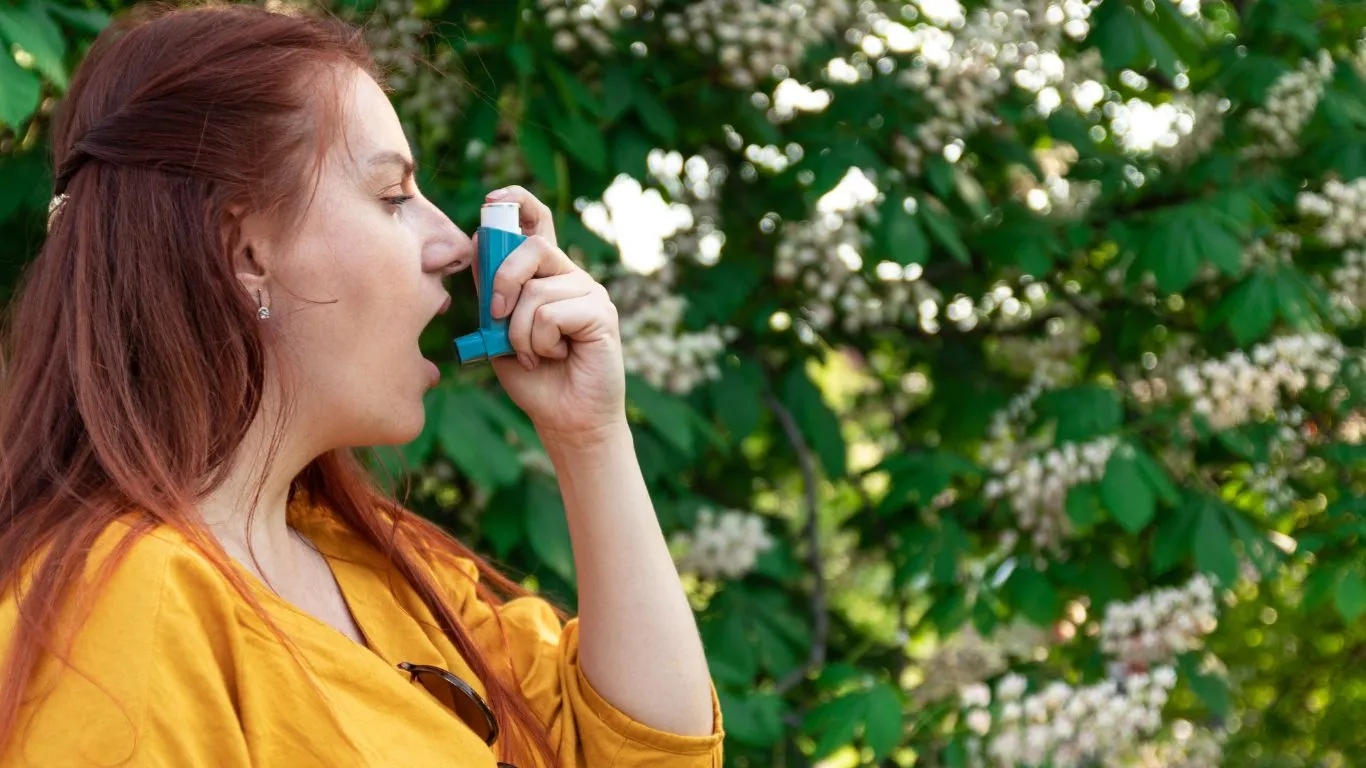Essential Asthma Management Tips for Elderly: Breathe Easier Today
Managing asthma in older adults comes with its own set of challenges, but with the right asthma management tips for elderly people, it’s absolutely possible to maintain a high quality of life. As someone who has spent years specializing in respiratory health, I’ve seen firsthand how proper care, small lifestyle tweaks, and a good support system can make all the difference. Whether you’re managing asthma yourself or caring for a loved one, this guide will walk you through key strategies to breathe easier and live more comfortably.
Understanding Asthma in Elderly People

Aging affects the lungs in various ways, and asthma in older adults isn’t the same as it is in younger people. The airways naturally lose some elasticity, lung capacity decreases, and the immune system may not respond as efficiently. These changes mean that asthma symptoms might be more intense, last longer, or even be mistaken for other conditions like chronic obstructive pulmonary disease (COPD) or heart disease.
Why Asthma Management Needs a Different Approach in Seniors
One of the biggest challenges I’ve encountered in my years of working with elderly asthma patients is that symptoms can be easily overlooked or misdiagnosed. Older adults may dismiss shortness of breath as just a normal part of aging. But here’s the thing—if you find yourself wheezing, coughing frequently, or struggling with chest tightness, it’s worth getting checked. The right approach to managing asthma at this stage of life can significantly improve your daily comfort and reduce flare-ups.
Recognizing Early Warning Signs

Asthma doesn’t just suddenly worsen; it gives signs, and catching them early can prevent serious complications. Here’s what to watch for:
- Increased shortness of breath, especially at night or early in the morning
- Frequent coughing that seems to linger
- More wheezing than usual, even when not exerting yourself
- Needing to use your rescue inhaler more often
- Unusual fatigue after mild activities
From personal experience, I’ve seen elderly patients ignore these warning signs, only seeking help when symptoms become severe. But the earlier you recognize and respond, the better control you have over your condition.
Medication Management: A Crucial Factor

Taking asthma medications properly is one of the most important aspects of managing the condition in older adults. Unfortunately, I’ve met many patients who either forget to take their prescribed inhalers or don’t use them correctly.
How to Stay on Top of Medications
Here are some practical tips to keep your asthma meds in check:
- Use a reminder system: Set alarms on your phone or use a pill organizer.
- Ensure proper inhaler technique: Many elderly patients struggle with inhaler use, which can reduce the medication’s effectiveness. A doctor or pharmacist can demonstrate the correct technique.
- Review your medications regularly: Some medicines can interact with asthma drugs, so it’s essential to have a routine medication review with your doctor.
- Monitor side effects: If you notice dizziness, increased heart rate, or tremors, speak to your healthcare provider.
Trust me, sticking to a proper medication routine makes a world of difference in keeping symptoms under control.
Creating an Asthma-Friendly Home Environment
Beyond medication, the home environment plays a huge role in how well asthma is managed. Simple adjustments can minimize triggers and help maintain good lung health.
Reducing Indoor Triggers
Common asthma triggers lurking in the home include dust mites, pet dander, mold, and strong scents from cleaning products. Here are a few ways to keep your living space asthma-friendly:
- Use an air purifier to filter out allergens.
- Wash bedding regularly in hot water to kill dust mites.
- Keep pets out of the bedroom to reduce dander exposure.
- Switch to fragrance-free cleaning and personal care products.
- Control humidity levels to prevent mold growth.
It might sound like a lot, but trust me—these small changes add up. Many of my elderly patients have told me that just tweaking their home setup made a noticeable difference in their breathing.
Maintaining an Active Lifestyle with Asthma

One of the biggest misconceptions I hear from elderly patients is that they should avoid physical activity if they have asthma. But staying active is actually one of the best things you can do for your lungs and overall well-being. The key is knowing your limits and choosing the right types of exercise.
Best Exercises for Seniors with Asthma
You don’t need to train for a marathon to stay fit. Low-impact activities can keep your lungs strong without triggering asthma symptoms. Here are some great options:
- Walking: A simple daily walk can improve lung capacity and circulation.
- Swimming: The warm, humid air in indoor pools can be easier on the lungs.
- Yoga: Helps with breath control and reduces stress, which can be an asthma trigger.
- Chair exercises: Perfect for those with mobility issues, these provide gentle movement.
- Strength training: Light weights can help maintain muscle mass without overexerting the lungs.
I’ve worked with many seniors who were initially hesitant about exercise but found that just a little movement each day made a massive difference in their breathing and energy levels. The trick is to start slow and listen to your body.
Managing Stress and Anxiety to Prevent Asthma Flare-Ups

Stress is a sneaky trigger that often goes unnoticed. When we get anxious, our breathing patterns change, sometimes leading to tightness in the chest and shortness of breath. I’ve seen stress-induced asthma attacks happen more times than I can count!
Simple Stress-Reduction Techniques
Managing stress doesn’t have to be complicated. Here are some easy ways to keep your mind and body relaxed:
- Deep breathing exercises: Practicing slow, controlled breathing can calm the nervous system.
- Meditation: Even just five minutes of mindfulness can make a difference.
- Listening to music: Soft instrumental or nature sounds can promote relaxation.
- Spending time outdoors: A little fresh air and sunshine work wonders for the mood.
- Engaging in hobbies: Whether it’s knitting, painting, or reading, doing something you love reduces stress.
Many of my elderly patients have found that simply taking a few deep breaths when they feel overwhelmed helps them regain control. It’s a small practice that makes a big impact.
Diet and Nutrition for Better Asthma Control

What you eat can either support or worsen asthma symptoms. I always recommend an anti-inflammatory diet to my patients because inflammation plays a huge role in asthma flare-ups.
Best Foods for Asthma
Here’s a list of foods that can help keep your airways in good shape:
- Fatty fish (salmon, sardines): Rich in omega-3s, which help reduce inflammation.
- Leafy greens: High in antioxidants that protect lung health.
- Apples and pears: These contain flavonoids that improve lung function.
- Turmeric: A powerful anti-inflammatory spice that can support the respiratory system.
- Ginger: Helps relax airway muscles and reduce wheezing.
Foods to Avoid
On the flip side, some foods can make asthma worse. Be mindful of:
- Processed foods: These often contain preservatives that can trigger symptoms.
- Dairy: Some people find that dairy increases mucus production.
- Fried and fast foods: Can cause inflammation in the airways.
- Sulfite-containing foods: Found in wine, dried fruits, and some pickled products.
I’ve had patients tell me they never realized food was affecting their asthma until they made some simple diet changes. If you notice certain foods make your symptoms worse, keeping a food journal can help identify triggers.
Building a Strong Support System
Managing asthma as an older adult can feel overwhelming at times, which is why having a support system is so important. Whether it’s family, friends, or a healthcare team, having people in your corner makes a world of difference.
How to Stay Connected
Here are some ways to make sure you’re getting the support you need:
- Join a local or online asthma support group: Talking to others with similar experiences can be incredibly helpful.
- Keep open communication with family: Let your loved ones know about your asthma plan so they can assist when needed.
- Schedule regular check-ups: Your doctor can help adjust treatments as needed.
- Don’t hesitate to ask for help: Whether it’s grocery shopping or attending appointments, having an extra hand can ease stress.
Many seniors feel like they have to manage everything on their own, but that’s far from the truth. Reaching out for support isn’t a sign of weakness—it’s a smart way to stay on top of your health.
Case Studies & Real-Life Examples

Over the years, I’ve worked with countless elderly patients struggling with asthma. Some faced frequent flare-ups, while others simply wanted to breathe easier and regain control of their lives. Let me share a few stories that might inspire you.
Mary’s Journey: From Constant Wheezing to Active Living
Mary, a 72-year-old retiree, had been battling asthma for decades. When I first met her, she relied heavily on her rescue inhaler and avoided activities that made her breathless. The problem? She didn’t realize that her daily habits were worsening her condition. After a few consultations, we worked on a plan that included:
- Using a spacer with her inhaler to improve medication absorption.
- Introducing light yoga and breathing exercises.
- Switching to fragrance-free cleaning products to reduce triggers.
- Following an anti-inflammatory diet rich in omega-3s.
Six months later, Mary’s symptoms had significantly improved. She no longer depended on her inhaler multiple times a day, and for the first time in years, she was able to take evening strolls with her husband without gasping for air.
John’s Wake-Up Call: The Importance of Medication Adherence
John, 80, had always been independent, but his asthma symptoms worsened after he skipped his controller medication for weeks. He thought he was “doing fine” until one evening, he experienced a severe asthma attack that landed him in the ER. That was his wake-up call.
After that incident, we implemented a structured plan:
- Setting daily alarms to remind him to take his medication.
- Scheduling routine check-ins with his doctor.
- Using a peak flow meter to track his lung function.
John learned that consistency was key, and within a few months, his asthma was back under control. His story is a powerful reminder that managing asthma requires daily effort.
Key Takeaways: What You Need to Remember
Let’s quickly recap the most important asthma management tips for elderly people:
- Recognize early warning signs and don’t ignore symptoms.
- Use medications as prescribed and ensure proper inhaler technique.
- Maintain an asthma-friendly home by reducing triggers.
- Stay active with safe, low-impact exercises like walking or yoga.
- Manage stress through breathing exercises, meditation, and relaxation techniques.
- Eat a healthy diet rich in anti-inflammatory foods to support lung health.
- Build a support system and stay connected with loved ones and healthcare providers.
Asthma doesn’t have to hold you back. Small daily changes can make a big difference!
FAQs
1. Can asthma develop later in life?
Yes! Many seniors are diagnosed with asthma for the first time. Aging lungs, exposure to irritants, and underlying health conditions can contribute to adult-onset asthma.
2. How can I tell the difference between asthma and COPD?
Both conditions cause breathing difficulties, but asthma symptoms are often reversible with medication, while COPD symptoms tend to progress over time. If you’re unsure, consult your doctor.
3. Is it safe for elderly people to use steroid inhalers long-term?
For most, yes! However, long-term use should be monitored by a doctor to prevent side effects like bone loss or oral infections. Rinsing your mouth after each use helps reduce risks.
4. What should I do if my asthma symptoms get worse at night?
Nighttime asthma can be caused by dust mites, GERD, or dry air. Try using an air purifier, elevating your pillow, and avoiding heavy meals before bed.
5. Are there natural remedies that help with asthma?
While natural approaches like breathing exercises, dietary changes, and air purifiers can help, they should never replace prescribed medication. Always consult a doctor before trying new treatments.
Bonus: Additional Resources or DIY Tips
Looking for more ways to manage asthma naturally? Here are some DIY tips that many of my elderly patients swear by:
- DIY Steam Therapy: Inhale steam from a bowl of hot water (with a towel over your head) to loosen mucus.
- Homemade Air-Purifying Plants: Consider getting snake plants or peace lilies to improve indoor air quality.
- Saltwater Gargle: Helps soothe irritated airways, especially during allergy season.
- DIY Dust Mite Spray: Mix equal parts vinegar and water, and lightly spray bedding to keep allergens at bay.
Appendix: References, Disclaimer, and Call to Action
References
For more in-depth research on asthma management, check out these trusted sources:
- American Lung Association
- Centers for Disease Control and Prevention (CDC)
- World Health Organization (WHO)
Disclaimer
This article is for informational purposes only and should not be considered medical advice. Always consult your healthcare provider before making changes to your asthma management plan.
Call to Action
Managing asthma as an older adult is absolutely possible with the right knowledge and support. If you found this guide helpful, share it with a loved one who might benefit. Have questions or need personalized advice? Drop a comment below or reach out to your healthcare provider!
Breathe easy and take charge of your health—one step at a time!

Bianca Nala is a compassionate Nurse Practitioner with a strong background in primary and respiratory care. As a health writer for Healthusias.com, she combines her clinical expertise with a talent for clear, relatable storytelling to help readers better understand their health. Bianca focuses on topics like asthma, COPD, chronic cough, and overall lung health, aiming to simplify complex medical topics without losing accuracy. Whether she’s treating patients or writing articles, Bianca is driven by a single goal: making quality healthcare knowledge accessible to everyone.






